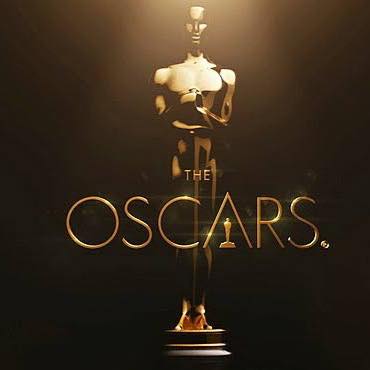Entertainment
In Oscar docs, an explosion of voice and style

If you’re looking for the most vibrant corner of the Oscars, look no further than that once musty and staid category: best documentary feature. (Photo: Oscars 2017
/Facebook)
NEW YORK—If you’re looking for the most vibrant corner of the Oscars, look no further than that once musty and staid category: best documentary feature.
Nowhere else do you find such a variety of form, of perspective and of storytelling. While Hollywood has in recent years been busy turning into a superhero factory, the more diverse documentary world has been exploding with an unmatched richness of experimentation and creativity. The stars might be in other categories, but the heat is in the docs.
Take Ezra Edelman’s “O.J.: Made in America,” the favourite to win. It’s nearly eight hours long and, according to ESPN, has been watched by 42.5 million in full or in part. That makes it one of the most widely seen movies of 2016. Roughly the same number of people bought tickets to “Rogue One: A Star Wars Story.”
“It originally was supposed to be five hours,” the 42-year-old Edelman recalled in a recent interview at a Brooklyn coffee shop. “Officially, they were like, ‘It’s fine if it’s six hours.’ When we screened that seven-and-a-half hour rough cut, they were like, ‘Make it whatever you need to make it.”’
It goes without saying that “Make it whatever you need to make it” is not an often-heard phrase in Hollywood. The rarity of such freedom isn’t lost on Edelman. But then again, the bigness of the canvas was the whole appeal to him. Edelman’s expansive, novelistic film amounts to not just a retelling of the Simpson trial but, with its bird’s-eye view and social history tapestry, a grand portrait of Los Angeles. In Edelman’s hands, Simpson is a mirror reflecting race, justice and fame in America — and that kind of story takes time to tell.
“There was no killing my babies based on some artificial time constraint,” says Edelman. “It was: Make the movie you want to make. It wasn’t: You have to do this thing to fit it into this box.”
Some have argued over just what box “O.J.: Made in America” goes in. Is it a film or TV? It’s a worthy debate, one that Edelman, who conceived and crafted his work as a film, has little interest in. (“O.J.” played theatrically before airing in five parts on ESPN.) But such semantics may be missing the bigger picture. The exciting shape-shifting that is currently ubiquitous in multi-screen documentary film — see Kirsten Johnson’s shortlisted memoir “Cameraperson” or Keith Maitland’s animated campus shooting recreation “Tower” — is making easy categorization elusive. And it’s producing some of the most dynamic cinema around.
“This is the golden age of the documentary,” says Barbara Koppel, the two-time Oscar winner of 1975’s revered “Harlan County, USA” and, most recently, a documentary on the late Sharon Jones. “These films are everywhere. Each film never ceases to amaze me, how great they are. It does my heart good.”
That’s in part the result of a healthier, if lower-paying film ecosystem. Four of this year’s five nominees were directed by black filmmakers. Along with Edelman, they are Raoul Peck (the scorching James Baldwin documentary “I Am Not Your Negro”), Ava DuVernay (the timely mass incarceration investigation “The 13th”) and Roger Ross Williams (the autistic coming-of-age portrait “Life, Animated”). The fifth nominee is the European migrant account “Fire at Sea” by the Italian director Gianfranco Rosi.
There are also more female filmmakers in the documentary field; 14 have been nominated in the past decade, including twice for Laura Poitras (2015 winner “Citizenfour”). Perhaps not coincidentally, several of the most powerful executives in docs are women, including Sheila Nevins at HBO, Lisa Nishimura at Netflix and Diane Weyermann at Participant Media.
“When it comes to inclusion in the documentary space, for a long time it’s been better than the feature film world,” says Thom Powers, artistic director of the DOC NYC film festival and programmer of other festivals. “By no means is it perfect and there’s a lot of room for more work to be done. But I don’t think it’s an accident that you’re seeing a lot more representation of African-American directors in the documentary nominations than you see in the feature film nominations.”
The budgets are smaller but opportunity is greater. Before DuVernay made “Selma,” for example, her feature debut was a doc: “This Is the Life,” about alternative hip-hop.
“If you’re going to decide to do something right now, you could in a DIY fashion make a documentary film,” says Edelman. “Nothing is easy. Everything is incredibly hard. But it means that people who heretofore would be excluded within whatever structure institutionally, have the ability to push forward on their own to get something done. So I don’t think it’s a coincidence that there is this diversity of voices in documentary filmmaking.”
The freedom has allowed filmmakers to speak bold, uncompromising truths about subjects like race. For “I Am Not Your Negro,” Peck combined Baldwin’s trenchant judgments of America and race with contemporary footage of Black Lives Matter protests and police brutality.
“As artists, we are forced to find new forms because the forms that we use right now are mostly formatted,” says Peck. “The industry is asking us to work more and more in certain forms of films. As artist and filmmakers, we have to show a resistance to that. It’s part of the battle.”
The films are finding wide audiences, too. “I Am Not Your Negro,” hailed as an urgently vital film, opened last weekend with $709,000 on 43 screens. There are the regular outlets like PBS and HBO, which on Monday premiered Kristi Jacobson’s deeply powerful solitary confinement documentary “Solitary.” But streaming services, particularly Netflix (which produced “The 13th”) have also made documentaries a priority.
It all makes for a striking contrast to the beleaguered fiction film world. Inclusion. Innovation. Audiences. Hollywood, like the rest of us, could learn a thing or two from today’s documentaries.





















